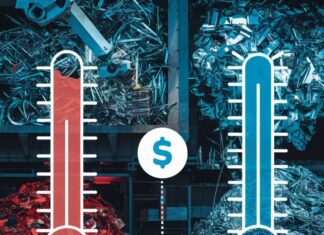If you have a business, then you know that the workforce plays an important role. Although most companies base their decisions on various factors, they usually prioritize human resources, especially during crises.
Always remember that the workforce is one of the crucial assets in all businesses. Thoroughly understanding your employees will help you implement better solutions and improve productivity and competitiveness in the industry.
Workforce data or analytics is the critical element that can empower your business as it provides better insights into what’s effective or not. Additionally, it allows you to uncover tools that’ll help your employees succeed.
What Is Workforce Data Or Analytics?

According to Revelio Labs, workforce data or analytics helps monitor and measure staff-related data, aiding the human resource teams to optimize a company’s workforce. It focuses not only on the hiring aspect but also on the return on value for every hire.
Additionally, it prioritizes specific data that helps identify workplace trends, such as risk factors, satisfaction with decisions, and many more.
The analytics can also assess the overall employment trends, such as the time frame with the highest number of applicants, or measure the diversity efforts and employee engagement.
Ways On How Workforce Data Or Analytics Improves Business Decisions
Here are several ways workforce data can help your business:
-
Improve Engagement

Along with the factors that affect productivity levels, workforce analytics can help any business fully understand why employees aren’t doing their best. It aims to maintain the current workforce in the best way possible instead of finding replacements. The objective is to discover factors that negatively affect engagement and performance. This way, you can overcome them with better conditions.
There are different ways to gauge employee engagement. Depending on the preferences of a company, some utilize text messaging platforms to gain feedback from employees. Others use a social media channel to start conversations and encourage participation.
A company should review the engagement metrics to provide an opportunity to follow up with employees who are lagging.
-
Pinpoint Areas That Require Automation
Although the employees are an asset to any company, specific tasks can reduce productivity or generate minimal returns. Workforce data can help pinpoint areas where you can assign duties via automation. The approach will allow employees to focus their efforts on other essential and valuable tasks or activities.
-
Create Better Criteria For The Hiring Process

Regardless of the scope or size of a company, the hiring process can be a complex task. Workplace data or analytics can provide insight into what’s necessary for new hires, which depends on previous applicants, success in the job, and the company’s requirements. The data of early hires will help you understand whether potential individuals would be suitable hires or not.
It’s crucial to note that some companies will take several months, usually an average of one to four months, to make a single hire. Each day spent on the hiring process can be a costly activity for many companies. Due to the high costs, most companies are turning to workforce analytics to minimize the ‘time-to-hire’ costs.
Remember that workforce analytics is handy when it comes to identifying qualified candidates. It also ensures better value during the hiring and onboarding process. In the long run, it allows companies to provide a better experience on both sides, enhancing turnover and retention.
-
Detect Problems Early
With the help of workforce data, you can readily identify potential red flags among your employees before they progress into more significant issues. Some of the potential problems might include an employee having a hard time in a specific area or is a possible flight risk and could leave at any moment.
The data can come in various forms, such as performance metrics, attendance history, response to surveys, and even sentiments from coworkers.
-
Deal With Knowledge Gaps Or Deficiencies

Workforce data or analytics can help companies provide the necessary opportunities for cross-training or improving skills to create a well-rounded workforce. Workforce data can help pinpoint knowledge gaps to help employees carry out their tasks.
Once you identify these knowledge gaps, it can help designate resources for ongoing education and encourage team culture. Additionally, dealing with skill deficiencies can boost employee engagement and prevent turnover or burnout associated with the feeling of being overwhelmed by employees.
-
Identify The Best Path Forward
Always remember that talent development is also a priority. Due to the high costs of hiring new individuals externally, most companies are making the necessary moves to retain top talent and create leaders from within. The human resource department can utilize workforce data or analytics to pinpoint the top employees in the company and help them create a career path.
-
Ensure Just Pay

With the help of workforce data, you can determine reasonable compensation practices to ensure just pay among employees. The company can utilize analytics to examine proposed candidate offers, promotions, and counter-offer considerations.
This allows the comparison of compensation profiles, performance ratings, incentive scores, and attributes of employees. Additionally, it provides a competitive edge when top candidates consider opportunities from various employers or if high performers are planning on leaving.
-
Improving Diversity
Diversity can play a significant role in the business world. Workplace data or analytics will come in handy since it has various functions, such as:
- Answering questions regarding the state of diversity in the company and throughout the employee lifecycle
- Identifying areas of possible intentional or unintentional bias
- Helping understand how to effectively deal with potential problem areas
Remember that analytics provides companies with better visibility into diversity initiatives.
-
Better Productivity

Analytics can also help companies optimize their productivity levels. Once a company can link the actual hours on tacks or activities to a suitable target time and monitor against this element, it can effectively boost the productivity levels of employees while saving money at the same time.
Conclusion
Workforce data or analytics is an indispensable element in any business today. Depending on the size or scale of your business, workforce analytics will play an essential role in the decisions you’ll make to improve the productivity and efficiency of your workforce in the long run.









